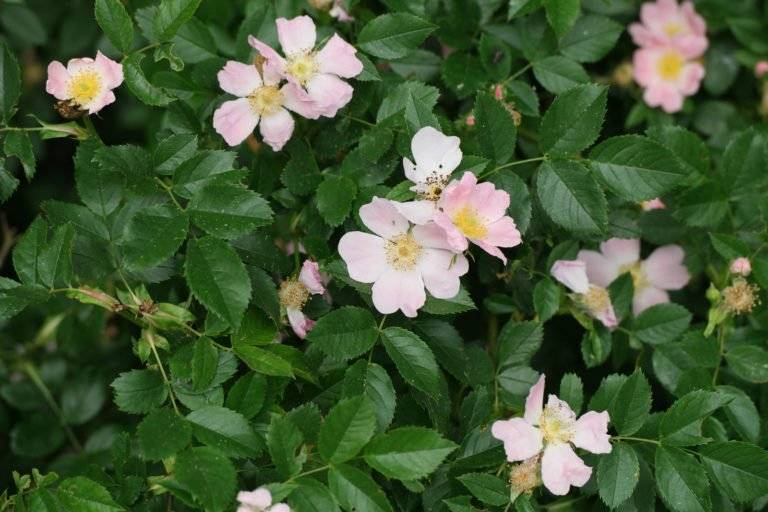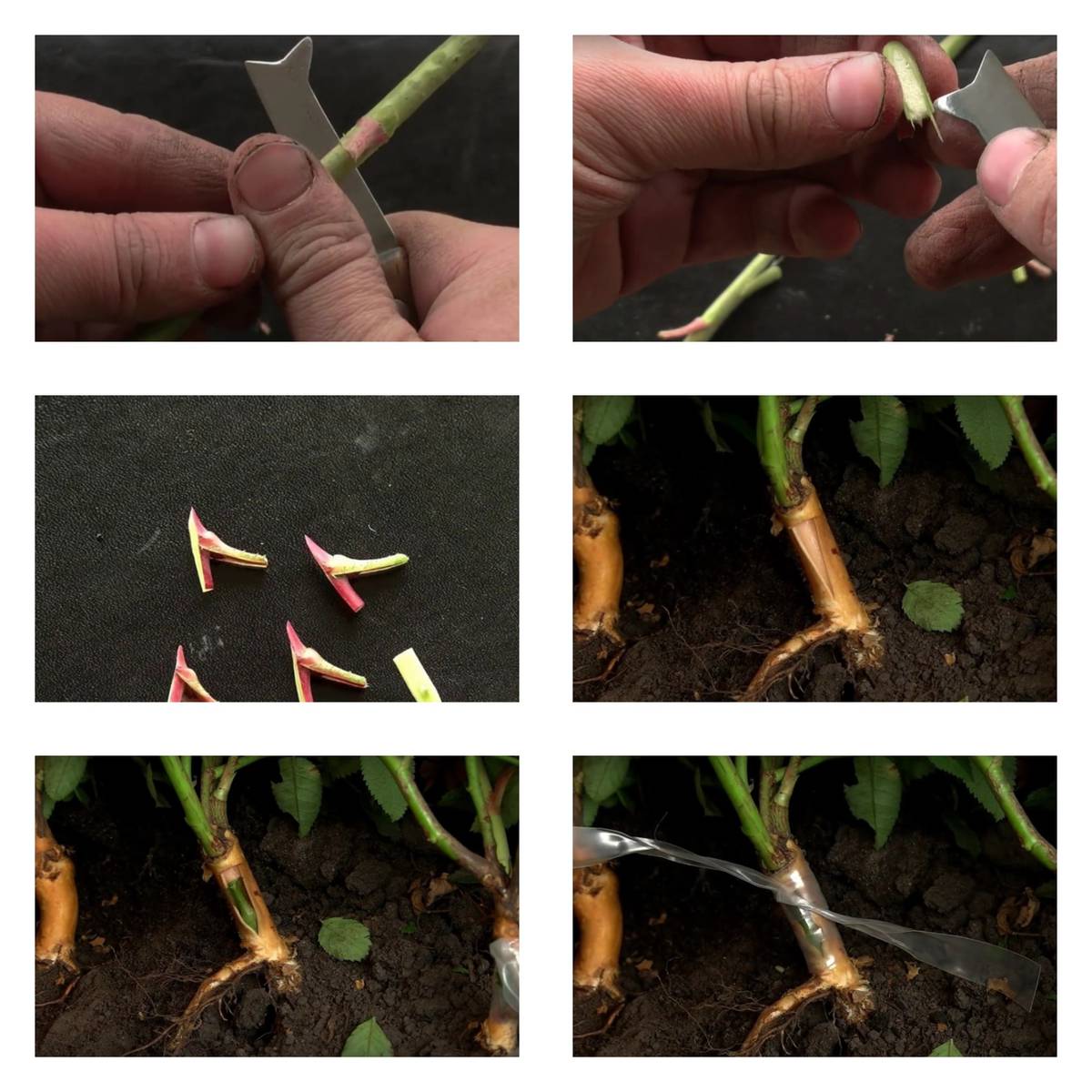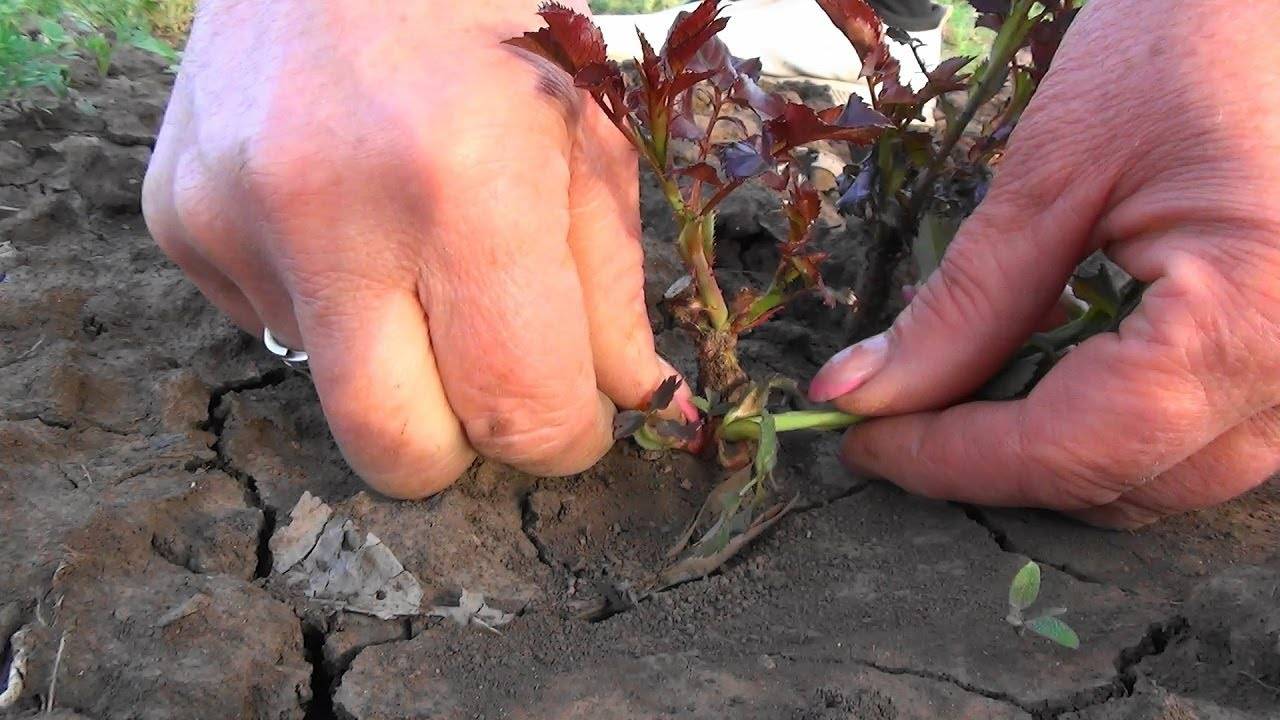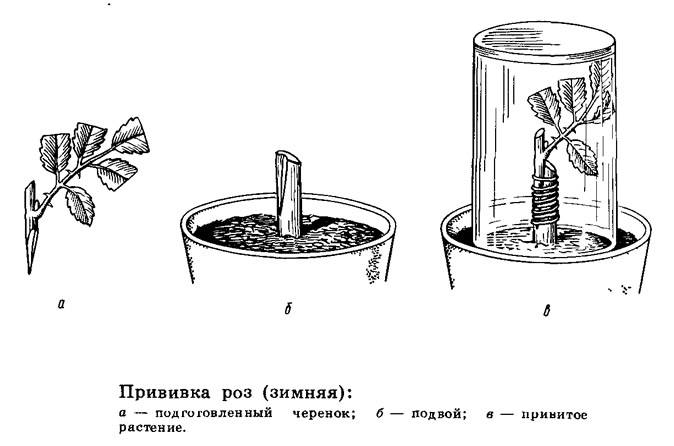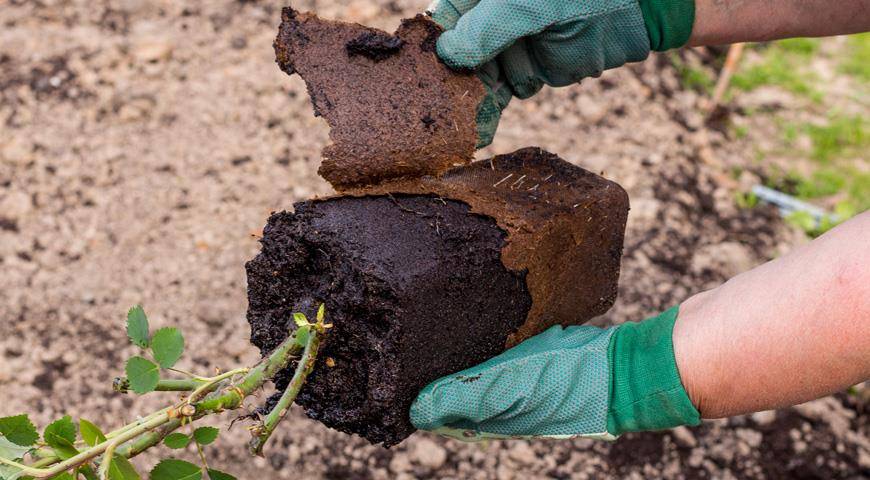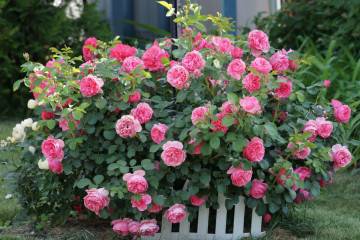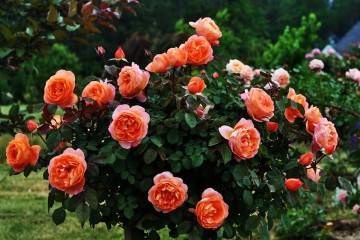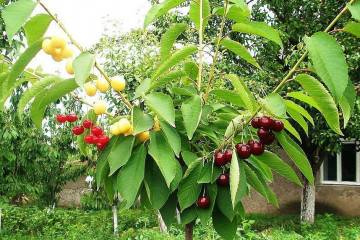How to plant a rose with a handle to a rosehip
Content:
Roses are deservedly considered the queens of the garden. Their presence in the floral composition invariably creates bright accents, gives the landscape sophistication and aristocracy. However, not everyone can grow their own beautiful and unique rose garden, as these flowers are quite capricious. A technology such as a rosehip grafting will help make roses more resistant and unpretentious. This method also allows you to convey the varietal qualities of the plant you like.
Grafting a rose on a rosehip
Grafting allows you to make a rose from a rosehip, since the artificially connected parts of different plants grow together to form a single organism. The part that is grafted is called a scion. The plant to which the grafting is carried out is called the stock.
Rootstock selection
The quality of the grafted rose largely depends on the rootstock, which will provide the plant with nutrition. Before planting a rose on a rose hip, you need to choose a suitable stock. Rosehip for rootstock must meet the following requirements:
- develop rapidly and form a strong, branched root system;
- have a smooth and even root collar, from which the bark is easily separated;
- have high fertility;
- stems should be smooth, with few thorns.
Most often, dog rose hips, also called Rosa Canina, are taken for the stock. This species is resistant to diseases, winter-hardy, has a strong root system and compatibility with many varieties.
Rosa Canina is a shrub up to two meters tall with pink flowers and red oblong fruits. The bush is strong, the stems are smooth, the thorns are rare. Root collar with easily detachable bark. The survival rate of buds grafted on this rose hips is high.
In regions with harsh winters, the wrinkled rosehip (Rugosa rose) is suitable for the stock. The disadvantage of this species is that its shoots are very thorny.
Polyanthus and miniature roses are grafted onto a red-brown rosehip (rust rose), since they grow strongly on a dog-rose stock.
Terms of vaccination
Each climatic region has its own terms of vaccination. It should be understood that the success of the grafting depends on the condition of the rootstock and the scion. By the time this procedure is carried out, intensive sap flow should begin.
Grafting of a rose on a rosehip in the summer in the open field is carried out from mid-July to September, during the summer sap flow at the rootstocks. Summer budding is also called budding with a sleeping eye, since it starts to grow only next spring.
Types of vaccinations
Vaccination can be done in different ways. The most common ones are:
- copulation (grafting by cutting).Using this method, more than one bud is left on the scion. For such an inoculation, you can take stem cuttings or the entire aerial part of the rose;
- ablating (grafting by rapprochement) differs in that the parts of two plants are pulled to each other, connecting the areas with the removed bark. At the junction, fusion occurs, after which the graft is separated from the mother plant;
- budding (from the Latin word "eye" - "Oculus") - the most common method of grafting roses, used mainly in the summer.
How to plant a rose in the summer
Cuttings for budding are cut from the middle part of the shoots that have already faded. Non-flowering annual shoots contain a lot of water, so their survival rate is low.
Part of the leaves is removed from the cut cuttings, leaving a third of the petiole, so that later it is convenient to hold the cut shields. The buds on the cuttings should be well developed and dormant.
The success of budding depends on the cleanliness and smoothness of the cut, therefore the budding knife must be disinfected and well sharpened.
Before budding, the seedlings are well watered. Before inoculation, dig out the growing rosehip stock. It is not necessary to dig out in advance, since the delicate bark dries quickly and is poorly separated. The root collar is released and rubbed with a napkin until the bark is light. For convenience, you can completely dig out a rosehip seedling.
It is better to inoculate on the side of the root collar, which faces north, so that in the future the scion does not suffer from the burning summer sun. A T-shaped incision is made on the root collar, first cutting the root collar across one third of the circumference, then a longitudinal incision is made about 2 cm long. The bark is separated by a slight swing of the blade to the sides and immediately pressed against the wood. If the bark does not adhere tightly to the wood prior to insertion of the shield, the cambium (a layer of actively dividing cells) is rapidly oxidized, changing color, and the survival rate decreases.
Moving from bottom to top, cut off the flap from the handle, while capturing a thin layer of wood. The vascular bundle leading to the kidney should be visible on the wood. The total length of the shield is about 2 cm, the kidney should be equidistant from the lateral edges of the shield.
With one hand, they take the shield by the remainder of the leaf petiole, and with the other, the bark is pushed apart with an budding knife. Then the flap is inserted into the T-shaped incision. If necessary, the upper part of the flap is trimmed, and the flap itself is pressed tightly against the wood. Compressor or insulating tape is tightly wrapped around the vaccine from top to bottom, leaving a free eye (kidney).
You can make sure that the vaccination was successful after two weeks. If the green bud has increased in size, and the petiole has fallen off, then the budding has taken root.
Further care of grafted plants
To preserve the budding with a sleeping eye in winter in the southern regions, it is enough to cover them with earth to the upper level and cover them with a small layer of fallen leaves. In areas with a more severe climate, a dry shelter is installed or the plants are dug up and transferred to a protected place.
At the end of April, the oculants (grafted plants) are dug out, the harness is removed and a cut is made 0.5 cm above the grafted eye.Plants tolerate this procedure better if it is carried out before the onset of strong sap flow. Then the bushes are neatly spud again. After two weeks, the eyes begin to grow and eventually break through the soil to the surface.
In the future, care will consist in loosening the soil, watering and feeding. It is also necessary to regularly inspect the plants in order to notice pests or diseases of the roses in time and take immediate action.
During the entire growing season, wild growth may appear below the graft. It needs to be removed. Wild shoots differ from cultivated rose shoots in small leaves, thorns and lack of flowering. The overgrowth weakens the cultivated part of the rose and can cause its death.
By August, buds begin to form in the eyepieces. Flowering slightly inhibits the growth of shoots, which promotes their ripening. It is recommended to leave the buds on the strongest shoots, it is advisable to remove the rest.
Well-developed grafted roses have up to five lateral shoots and mature buds on the lower branches. These roses are considered excellent planting material.
Grafting a rose on a rose hip at the beginning of winter
If you use winter grafting, you can shorten the time it takes to grow your home rose seedlings. For grafting in late autumn and winter, rosehip seedlings are suitable, the root collar of which is as thick as a pencil (7.5-8 mm).
The rosehip is dug up in the fall, then the aerial part of the plant is cut off, leaving 6-7 cm above the root collar. Seedlings are added dropwise into moistened sawdust (sand) and stored, maintaining the temperature in the range from −1 ° C to 1 ° C. It is convenient to store the stock in the basement.
In December, the stock, without removing it from the sand, is brought into the room and stored for 3-4 days at a temperature of 5-8 ° C. Then the vaccination is started. Cuttings are introduced into a warm room 14 hours before budding. An upper straight cut is made half a centimeter above the kidney and an oblique cut is made just below the kidney. The upper part of the stock is cut off, leaving a small stump and a longitudinal vertical cut is made on it. The bark is turned back with a knife and the handle is inserted there with an oblique cut down. Secure the inoculation with tape.
The grafted plants are placed in containers with moist peat and conditions are created for the growth of the rootstock and scion. Moderate humidity and an ambient temperature of about 20 ° C are optimal. After about two weeks, the vaccine heals and the kidneys begin to grow. When the shoots reach 8 cm in length, the seedlings are planted in pots with soil and taken out to a bright place. Until spring, they are kept at a temperature of 10-15 ° C.
With the onset of warmth, the plants gradually adapt to the conditions of open ground, putting them outside every day. Then the seedling pots are left outdoors in the shade for a week. Adapted plants should be planted in the ground in a permanent place with a clod of earth and moistened abundantly.
Reproduction of garden roses using rosehip grafting is an effective and common method in many regions. Acquiring such positive qualities of the rootstock as unpretentiousness and rapid growth, the rose retains decorativeness, aroma and the ability to re-bloom, which are inherent in varietal specimens.Grafted roses can transform any corner of the garden in a short time, adding bright colors and creating an atmosphere of comfort and romance.

